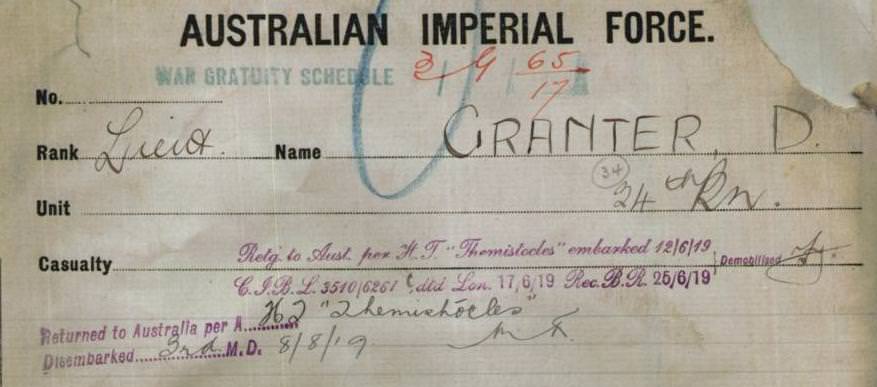
8th Field Artillery Brigade - 34th BATTALION A.I.F.
Lieutenant: 19583 - 671 Donald GRANTER.
Born: 19th June 1887. Warrnambool, Victoria, Australia.
Married: 24th January 1920. Elsternwick, Victoria. Australia.
Wife: Marion. Granter. nee: Hills. (1887-1977)
Died: 8th June 1959. Richmond, Victoria, Australia.
Father: Frederick Granter. (1857-1917)
Mother: Hardina Granter. nee: McPherson. (1857-1939)
INFORMATION
Donald Granter enlisted with the 8th Field Artillery Brigade with the rank of Sergeant on the 13th July 1915 and embarked from Australia on the 20th May 1916.
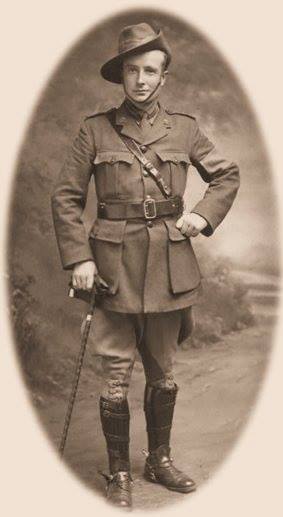
25th December 1917.
(1) Christmas Day 1917 was celebrated in good style and was made realistic by a snow fall. Food was ample and all Ranks enjoyed a traditional meal, accompanied by a plentiful supply of Beer. Fuel was in good supply and fires were kept going during the long evening. Whilst here Captain: James FLORANCE took over as Quartermaster from Lieutenant: 6 Frank William BAULCH who became Quartermaster of Brigade School. On 1st January 1918, New Years Day, the Battalion was relieved by the 171st Brigade and proceeded to de Seule hutmen Camp. Owing to a hard frost the marching was difficult. on the following day the march was continued via Bailleul to Meteron Billeting Area, where the Billets were very scattered. While here the frost broke, making the road very muddy and unpleasant for marching and transport. General Training was carried out, interspersed with Sports and Football Matches. During this period, Captain: Robert Joseph STEWART left the Battalion to take up special duty in England. Captain: Telford Graham GILDER. took over command of "A" Company and Lieutenant: Donald GRANTER became Transport Officer.
(1) A Short History of the 34th Battalion, Illawarra Press; 1957.
On the 26th of December, Donald was transferred to the 34th Battalion with the rank of 2nd Lieutenant and Taken on in Strength in the field on the 21st January 1918 and Lieutenant on the 22nd March 1918.
30th March 1918.
9:30am: weather wet, Battalion left CACHY and marched to BOIS LE ABBE, where they bivouaced in readiness to go forward as Counter attack troops. "B" Teams were sent to BLANGY-TRONVILLE. Battalion moved up as support Battalion to 33rd Battalion AIF who were attacking on north side of BOIS DE HANGARD and LANCERS WOOD. Battalion moved West and south of CACHY when approaching BOIS DE HANGARD advanced in Artillery formation. Battalion halted just north of BOIS DE HANGARD in position of readiness to support 33rd Battalion AIF.
6:00pm: About 6:00pm A Company 34th Battalion was detailed to go forward to report to Commanding Officer 33rd Battalion AIF who were on left flank of attack. In moving up A Company extended into 4 lines of skirmishes and laid down with cover fire from line near 33rd Battalion Headquarters. Officer Commanding A Company Captain: Telford Graham GILDER went forward to reconnoiter 33rd Battalion's line. B Company 33rd Battalion was found to have suffered heavy casualties and enemy were still holding the top of ridge. It was therefore decided to attack enemy's position on ridge.
Shortly before 8:00pm A Company 34th Battalion moved forward in two waves each of two platoons. When 100 yards in rear of 33rd Battalion Head Quarters the 2nd wave inclined to the left and came up on the left of the leading wave and the whole Company attacked the ridge in one line. The enemy were driving out of what apparently was there Picquet Line where two Machine Guns were captured. The line extended its advance and drove the enemy out of his continuous line at the point of a bayonet, and advanced a further 50 yards at this point 7 prisoners were captured, 4 of whom actually went prisoners rage.
The number of enemy casualties was estimated at 60 killed and wounded. Machine Gun fire was very heavy from enemy lines on the left flank and was responsible for the death of 2nd Lieutenant: 1973 Reuben PARKES a very gallant officer and most of the casualties were suffered by this company. The enemy continuous trench system was then occupied for about 2 hours. In the meantime patrols were sent out to the right flank to try to establish communication with the 33rd Battalion AIF. These patrols encountered enemy posts behind our own line on this flank. Touch was eventually gained through a patrol of the 33rd Battalion under Captain: Telford Graham GILDER. On information received from Lieutenant: 916 Robert Cecil KING That it was impossible for the 33rd Battalion to push forward on to the line which the 34th Battalion were holding, it was decided to move back to the line which the 33rd Battalion had then dug in on about 250 yards to our rear.
We then dug in our men filling a gap of about 650 yards in the 33rd Battalion line apparently the enemy did not discover our tactical withdrawal until sometime later at about 1:30 am, the enemy appeared on the sky line advancing in extended order. This apparent counter attack was completely broken up by our Machine Gun and Lewis Gun fire. About 3:00 am "A" Company 34th Battalion were relieved by a Survey Regiment Company then moved to CACHY. "B" Company 34th Battalion also occupied a position in 33rd Battalion line but did no actual fighting and had no casualties.
34th Battalion War Diary
4th-5th April 1918
| 33rd Battalion. AIF | 3 Officers | 82 Other ranks |
| 34th Battalion. AIF | 5 Officers | 120 Other ranks |
| 35th Battalion. AIF | 9 Officers | 282 Other ranks (including 44 missing) |
| 36th Battalion. AIF | 12 Officers | 133 Other ranks (including 1 missing) |
| 9th Machine Gun Company. AIF | 1 Officer | 18 Other ranks (including 4 missing) |
After Villers-Bretonneux Donald was treated by the 11th Australian Field Ambulance for Influenza and was transferred to the 20th General Hospital at Carmiers before he was invalided to England on the 14th May 1918.
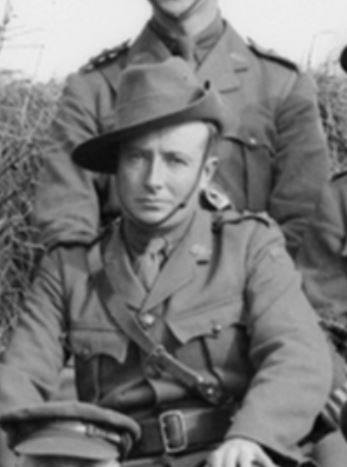
16th July 1918.
8:00 am. Trenches in very bad condition owing to continues rain. Wellington and Owl Trenches 2" to 2.6" of water. 10:55 am. Enemy put a heavy barrage 4.25 & 5.95 arraigned and along Wellington and Owl Trenches. No casualties but great deal of material damage to trenches Desultory fire continues all day. 2:00 pm to 6:00 pm. Our 4.5" Hows & 6" Hows were turned on to destroy 3 German Strong Points, which were causing considerable trouble to A Company and several casualties from bombs & small calibre minerwerfers thrown into front line from these positions.
Arrangements had been made for a minor enterprise to capture these strong points at 10:00 pm tonight. At 9:00 pm the C.O rang up Brigade and informed the Brigadier that the artillery had failed to hit the strong points and requested that a minor operation be postponed. Instructions were received at 9:15 pm to go on with the enterprise. At 10:00 pm Lieutenant: Edward George HODGES and 45 men and 2 Lewis Guns attacked the Strong Points. Immediately this party left out trench, they were met with a barrage of Machine-Gun fire, bomb and grenades from the Strong points. The party pushed on with great determination until they came to CINEMA ROAD.
Here they were exposed to enfilade Machine-Gun fire, and found that the Strong Points were filled with the enemy standing shoulder to shoulder awaiting the attack. Lieutenant HODGES successfully arranged the withdrawal of his party under very difficult circumstances. At 10:58 pm Captain: Robert Joseph STEWART. reported the enemy heavily bombarding front support lines of A (Right) Company and there was early indications of an attack by the enemy. He fired the S.O.S. and our answering barrage prevented the development of the enemy's attack. Casualties for minor enterprise were Killed 2, Wounded 10.
(34th Battalion War Diary)
8th August 1918.
BARRARGE. The barrage opened at 4:20am and was accurately placed. The enemy immediately fired single and double Red and Golden Rain Light Signals. The enemy's reply to our barrage was very ineffective but his Machine Gun fire was considerable during the early stages of the advance, but caused very few casualties.
LOCATIONS. Battalion Headquarters was located at P.16.c.1.7 before Zero, after Zero a temporary Headquarters was established at the Quarry at P.16.b.2.8 pending the report and the capture of ACCROCHE WOOD, from the two flank Companies.
THE ADVANCE. Owing to the dense fog observation was impossible and the tanks appeared to have great difficulty in keeping in touch with the direction. Runners were sent forward at 4:45 am to get in touch with the assault parties and at 5:15 am they brought back word from Captain: Albert Edward YATES 35th Battalion that his Company was through the Wood. Battalion Headquarters then moved forward through the wood towards CERISY VALLEY. About 150 stragglers of all Battalions including 3 Lewis Gun Teams were collected during the advance and formed into a Company.
Owing to the density of the fog and the obscurity of the forward position forward I deployed the Company and took them forward as far as GAILLY Line arriving there at 5:45 am. We later met a detachment of prisoners and were told by the escort that CERISY VALLEY was partially mopped up and most of the Units were moving forward to their objective. I than ordered all men of the 33rd and 35th Battalions to go forward to join their respective Units, and organised two posts with the men of the 34th Battalion, placing one in the enemy trench at P.24.b.3.3 (approx) and the other at P.18.d.0.7 (approx).
This latter post shortly afterwards established liaison with the 11th Brigade. The remainder of the Battalion assisted the 33rd and 35th Battalions in capturing and consolidating the GREEN Line. They were released from the GREEN Line between 9:45 am and 10:15 am and proceeded then to consolidate the GAILLY and RESERVE Lines as shown on map forwarded.
BOOTY. Owing to the conditions existing it was impossible to estimate the number of prisoners captured by the Battalion as prisoners from the 3 Battalions were grouped to reduce the number of men required for escort. So far no estimate has been made of the number of Trench Mortars and Machine guns etc, captured in the area. Salvage operations are in progress and as soon as they are completed a detailed report will be forwarded. In the CERISY VALLEY one 21 cm and eight 7.7 cm guns were captured together with large quantities of ammunition.
Commanding Officer 34th Battalion AIF. (34th Battalion War Diary)
23rd August 1918.
4:45 am Weather fine. Barrage fire on other side of the River. 10:00. Enemy bombarded Road at L.9.a. 11:10 am. Artillery fired on our Left Flank many falling short. 12:30 am. C.O. went to Brigade Headquarters informing Brigade of situation. 4:00 pm. Word received that the Brigade would be relieved that night. 6:30 pm. Colonel: HAMILTON of 39th Battalion, AIF came for particulars of relief. 7:00 pm. Machine Guns very active. 11:30 pm. 39th Battalion arrived, guides supplied but no Lewis Guns to hand.
(34th Battalion War Diary)

34th Battalion Transport Section
Rear Row: Left-Right Lieutenant: Donald GRANTER. - Major: Harry Lambert WHEELER. - Lieutenant: Augustus Gibson FARLEIGH.
11th November 1918.
ARMISTICE SIGNED
We could now tell by the news in the papers that the war was practically over although we (The Third Division) was told to hold ourselves in readiness to proceed to the line again – the 1st, 4th, and 5th Australian Divisions being already on their way back to the line. On Monday 11th November 1918 (the day the Armistice was signed) we marched to Alleray for a hot steam bath and on passing through Airaines found all the houses decorated with tricolours and the church bells pealing and the Frenchies running about like madmen. We wondered what was wrong and halted in the main street for a rest. The Captain then told us (he had interviewed the Mayor who had received a telegram saying that the Armistice was to be signed) that the Armistice was to be signed at 11 a.m. that morning – it was then about 10 a.m. We gave three cheers and could scarcely realize that the war was over. When we arrived back at Warlus the news had already reached there and the town was decorated &c. Next day we had a holiday from drill to celebrate Peace. The bells of the old French church chimed day and night for several days. Most of us attended the Victory Mass at the Roman Catholic Church and we also had a great Thanksgiving service out on the parade ground. Some of the men broke camp and went to the neighbouring cities and some got as far as Paris. Many were "pinched" and put in clink (gaol) as they had no leave passes – others were caught and sent back to the Battalion.
Daniel was granted leave to Rome on the 7th January 1919 and returned to England on the 22nd of April before returning to Australia on board the "Thermstocles" on the 12th June 1919 and had his appointment was terminated from the AIF on the 22nd September 1919.
Family Information
Donald was a single 27 year old Farrier from Coloc, Victoria prior to enlistment.
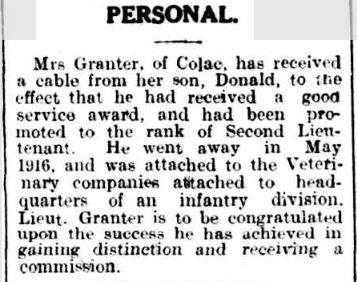
Military Records






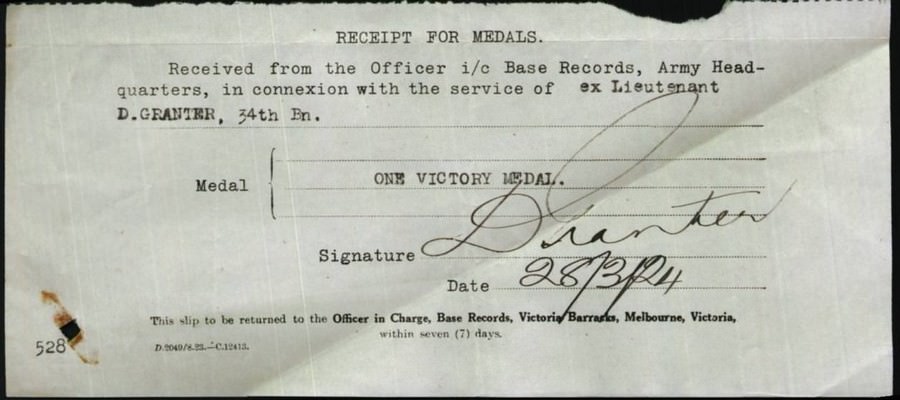
















© Commonwealth of Australia (National Archives of Australia)
Under Construction; 10/01/2014-10/03/2017.